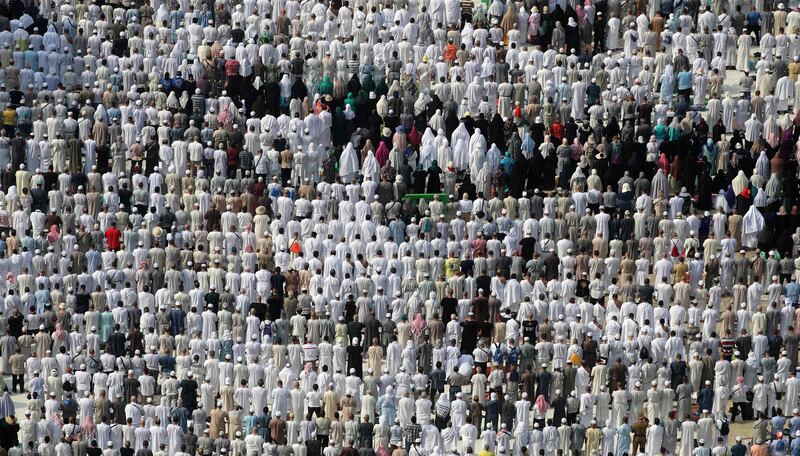Which is the right Instagram filter to use when posting a selfie of yourself in front of the Kaaba in Makkah? And if you’re on Snapchat does it violate the state of ehram (pure white clothing) if you have a pink daisy chain on your head?
With Hajj season kicking in soon and the fortunate pilgrims starting to make preparations, such questions of social media behaviour are less crazy than you might think.
Everyone has a phone with a camera, and social media and the internet are bursting at the seams with Hajj, Umrah and Makkah selfies. And why not? For many it is a life changing moment, which they want to record for posterity and share with all those loved ones at home who have shared in the preparation and anticipation that surrounds these seminal journeys.
It wasn't like that 20, or even 10, years ago. But as social media and live broadcasting have become easier and more widespread, things have taken a different turn.
Authorities and other pilgrims have started to complain that the selfie takers are causing obstacles, delays and, perhaps most egregiously, distracting from the spiritual experience. If the purpose of the pilgrimage is indeed to discard the physical and engage with the spiritual, leaving behind worldly woes, is it okay to make a video call to friends and family? Is it okay to circle the kaaba while live broadcasting?
This week, the Association of British Hujjaj (pilgrims) issued a press release urging the Saudi authorities “to adopt a zero tolerance policy, confiscate any filming devices/cameras and make efforts to protect the sanctity of the holy places”.
The association described selfie-taking as a “dangerous phenomenon which is destroying the spirit of Hajj/Umrah pilgrimage.” It is not the first to do so; there are reports that Saudi authorities banned selfies in both Makkah and Madinah in November 2017. But it still happens.
I have a lot of sympathy for these concerns about the “growing culture of disregard” for the sanctity of the Al Haram. In the association's rather generous view, pilgrims are naive, rather than pre-occupied with themselves and the place as a tourist destination.
But I say that with my cheeks blushing because I too have taken the selfies. I even remember video-calling my Mum while sitting opposite the Kaaba. It’s easy and feels natural to do so – who wouldn’t want to share their most incredible moment with those they love? And why not make Hajj accessible to everyone, albeit via the small screen?
___________________________
Read more from Shelina Janmohamed:
Poor treatment of women in the UK calls for a rethink in the split between public and private
Grenfell Tower is a monument to the tragic inequalities of modern Britain
Denying the discrimination of British Muslims is its own twisted form of Islamophobia
___________________________
One of the loveliest things about the Hajj season is the historic photos that emerge depicting Hajj through the ages, showing its architecture, crowds, clothes and meaning in that time and to those people. The way Hajj selfies are taken today will be no different.
One of the themes of the post-1990 Generation Z is the idea that if you didn’t Instagram it, it didn't really happen. That might make us laugh, but if that’s how pilgrims today will truly experience Hajj, maybe we ought to make some allowances for it. (Although I think once you’ve got a couple of selfies under your belt, it’s probably time to disconnect.)
The rise of the selfie offers an insight into how present individuals are and how much they are performing faith. I’m sure that is nothing new, because no human being can be fully immersed all the time. For instance, in my own visit to the Al Haram Mosque, what I found far more annoying were people chattering idle gossip or conducting business dealings whilst in the midst of Tawaf. But is that human beings just being human beings?
The difference today is that we can quantify it, by the number of minutes of live broadcast, how many people watched your Snapchat story or how many likes you received on Facebook.
So if you’re going to Makkah this year, by all means take your selfies. But don’t make the selfie the experience – make it the souvenir.
And if you think it’s about sharing the experience, then be honest with yourself about whether it's really for the benefit of others, or merely your own status.
But most of all be mindful of not ruining the spirituality of the occasion for yourself or the other pilgrims immersed in it.
And if you do capture the spirit of prayer in your selfie, please be sure to tag me in it. All prayers – in selfie or otherwise – will be gratefully received.
Shelina Janmohamed is the author of Love in a Headscarf and Generation M: Young Muslims Changing the World





